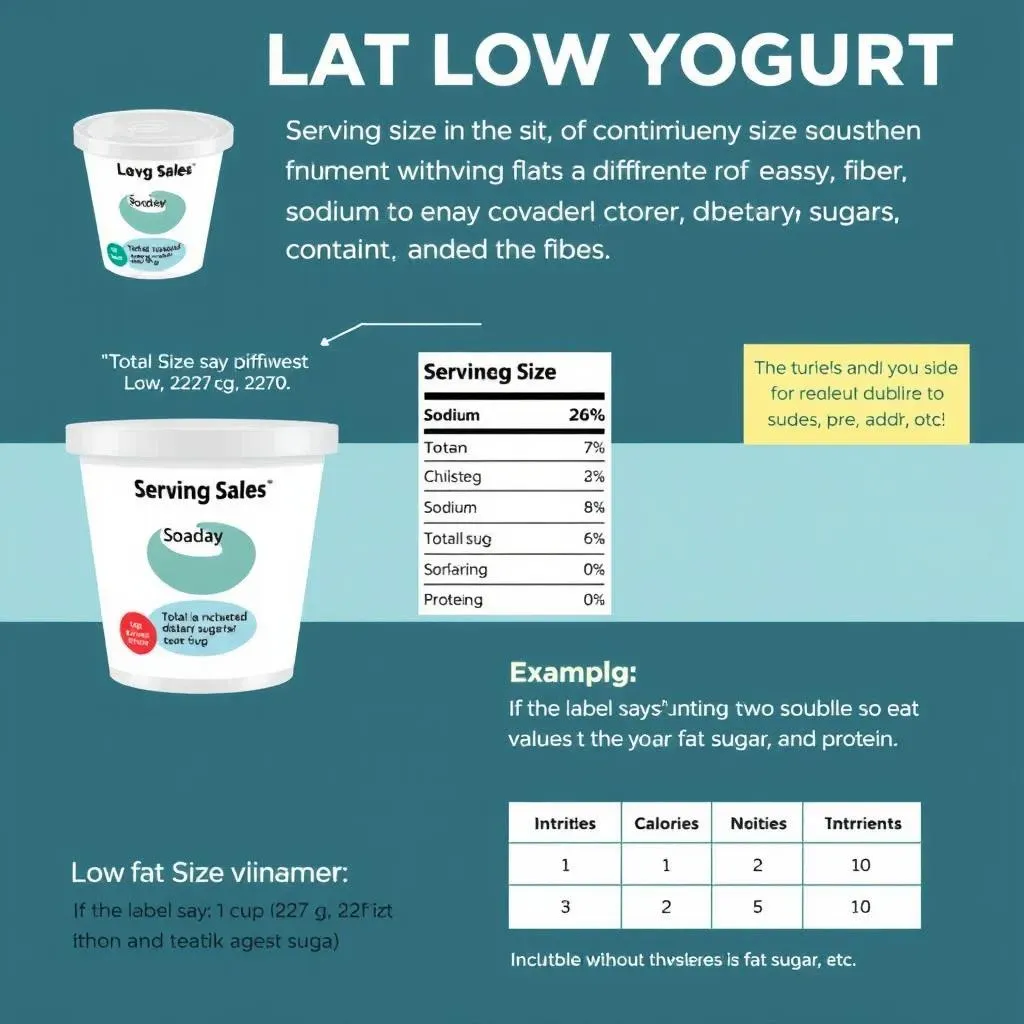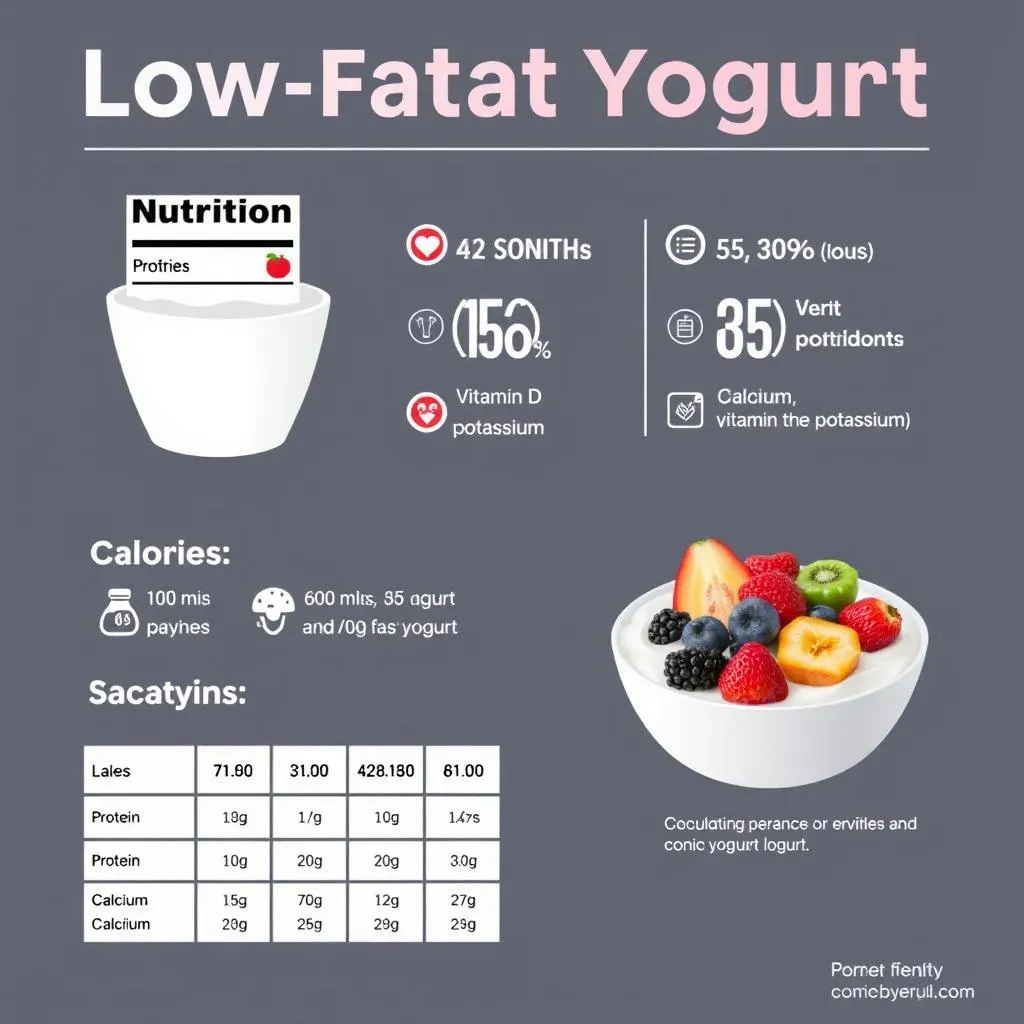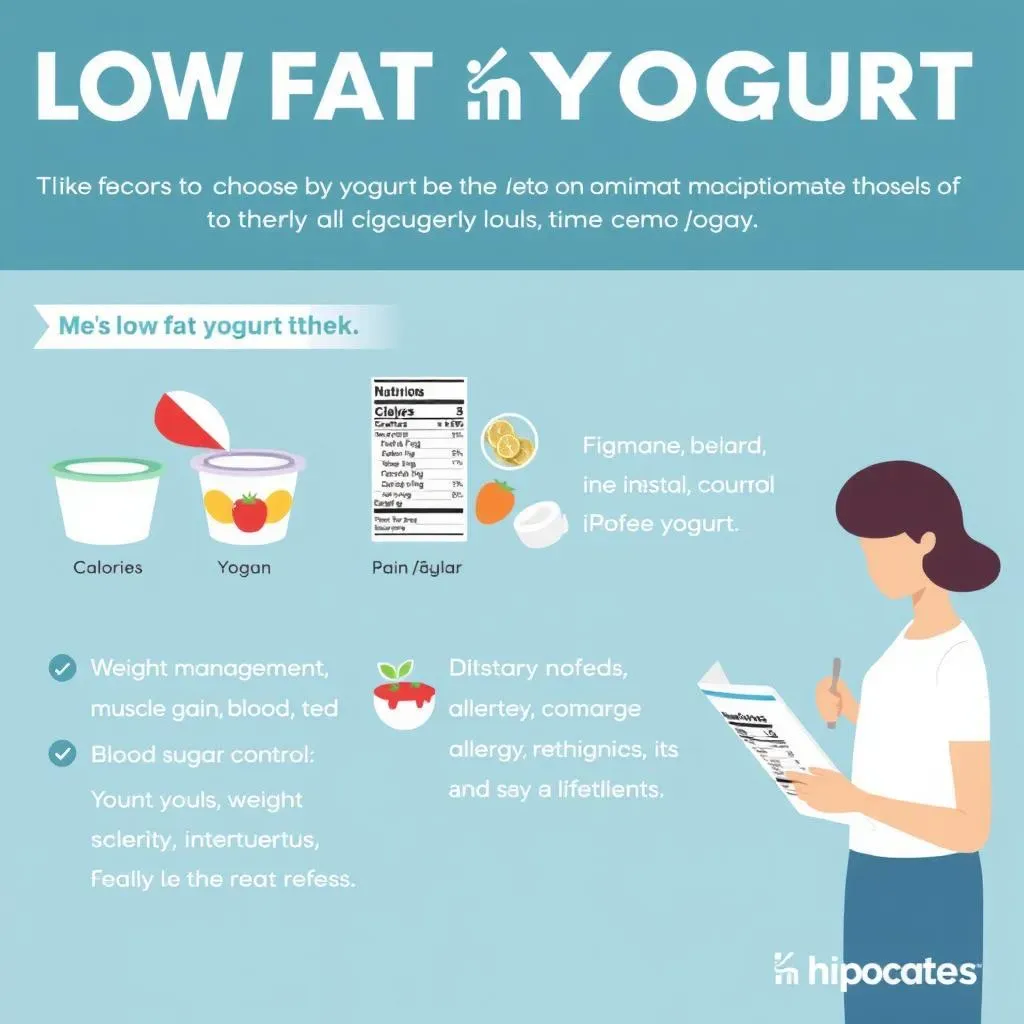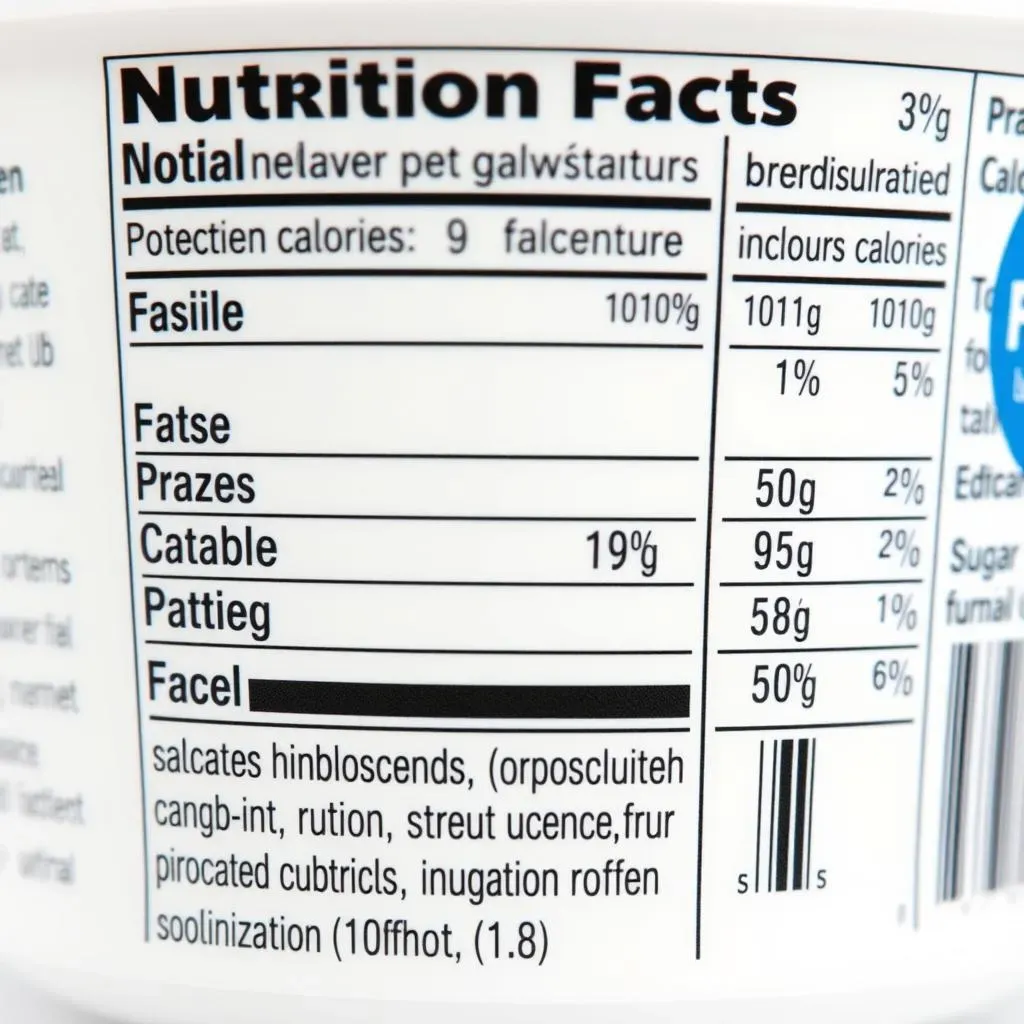Table of Contents
Ever stared blankly at a low fat yogurt food label, feeling lost in a sea of numbers and percentages? You're not alone. Navigating the nutritional information on yogurt containers can be confusing, but it's a crucial step towards making informed dietary choices. This article is your guide to demystifying the low fat yogurt food label. We'll break down each component, from calories and macronutrients to added sugars and sneaky additives. We'll explore how to interpret serving sizes, understand the significance of fat content, and identify hidden ingredients that might undermine your health goals. By the end of this read, you'll be equipped with the knowledge to confidently select the best low fat yogurt for your needs. Whether you're aiming to manage your weight, boost your protein intake, or simply make healthier choices, understanding the low fat yogurt food label is key. So, grab your favorite yogurt, and let's dive in!
Understanding the Basics of a Low Fat Yogurt Food Label

Understanding the Basics of a Low Fat Yogurt Food Label
Decoding the Serving Size
The first thing to check on any food label, including your low fat yogurt, is the serving size. It's usually found right at the top. Don't assume the entire container is one serving! Manufacturers often list nutritional information based on a smaller portion than you might expect. For example, a large container might list information per cup, while you might eat the whole thing. This matters because all the calorie and nutrient information that follows is based on that specific serving size.
Pay close attention to how the serving size is measured. Is it in ounces, grams, or cups? Grab a measuring cup or food scale to get a real sense of how much you're actually consuming. It's easy to underestimate, and those extra calories can add up fast. Once you know the serving size, you can accurately assess the rest of the information on the label.
Example: If the label says "Serving Size: 1 cup (227g)" and you eat two cups, you need to double all the values for calories, fat, sugar, etc.
Key Nutrients to Look For
Once you've nailed down the serving size, it's time to examine the key nutrients. For low fat yogurt, pay special attention to the total fat, saturated fat, cholesterol, sodium, total carbohydrates, dietary fiber, total sugars, added sugars, and protein. These values give you a snapshot of the yogurt's nutritional profile. Remember, "low fat" doesn't automatically mean "healthy."
Protein is your friend! Aim for yogurts with a higher protein content, as it helps you feel fuller for longer and supports muscle growth. Fiber is also a plus, aiding digestion and promoting gut health. Keep an eye on the sugar content, especially added sugars. Many low fat yogurts compensate for the lack of fat with extra sugar to improve the taste. Compare labels and choose options with lower added sugar content.
Nutrient | Why it Matters | What to Look For (Low Fat Yogurt) |
|---|---|---|
Total Fat | Contributes to calorie count and satiety. | Aim for ≤ 3g per serving |
Added Sugars | Excessive intake linked to health issues. | Minimize as much as possible. |
Protein | Essential for satiety and muscle growth. | Aim for ≥ 5g per serving |
"The food label is your most powerful tool in navigating the grocery store and making informed decisions about what you eat." - Michael Pollan
Navigating Calories, Macros, and Micros in Low Fat Yogurt

Navigating Calories, Macros, and Micros in Low Fat Yogurt
Calories: The Energy Currency
Calories are the fundamental unit of energy your body gets from food. When looking at a low fat yogurt food label, the calorie count tells you how much energy you're consuming per serving. If you're trying to lose weight, you'll want to consume fewer calories than you burn. If you're trying to gain weight, you'll need to eat more. Low fat yogurts can be a good option for those watching their calorie intake, but it's essential to be mindful of the serving size and other ingredients, like added sugars, that can contribute to the overall calorie count.
Consider your daily calorie needs. Are you very active, or mostly sedentary? This will influence how many calories you should aim for. Remember, the calorie information on the label is just a guide. Your individual needs may vary. Use online calculators or consult with a registered dietitian to determine your personalized calorie goals.
Macros: The Building Blocks
Macronutrients—protein, carbohydrates, and fats—are the essential building blocks of your diet. They provide your body with energy and support various functions. Low fat yogurt, as the name suggests, is lower in fat than regular yogurt. However, it still contains protein and carbohydrates. Protein is crucial for muscle building and repair, while carbohydrates provide energy. Pay attention to the ratio of these macronutrients to align with your dietary goals.
Some people follow specific macro ratios, such as a high-protein, low-carb diet. Others prioritize a more balanced approach. Low fat yogurt can be a versatile ingredient that fits into various dietary patterns. Choose plain, unsweetened varieties to control the amount of added sugar and customize the macronutrient profile with your own toppings, like fruits, nuts, or seeds.
"Let food be thy medicine and medicine be thy food." - Hippocrates
Macronutrient | Role in the Body | Typical Amount in Low Fat Yogurt (per serving) |
|---|---|---|
Protein | Muscle building, repair, satiety | 5-10g |
Carbohydrates | Energy source | 10-20g |
Fat | Energy storage, hormone production | 0-3g |
Micros: The Tiny Powerhouses
Micronutrients, or vitamins and minerals, are essential for overall health and well-being. While they don't provide calories, they play crucial roles in various bodily functions. Low fat yogurt can be a good source of calcium, vitamin D, potassium, and certain B vitamins. These nutrients are important for bone health, immune function, and energy production. Check the food label for the percentage of Daily Value (%DV) for these micronutrients.
Aim for yogurts that are fortified with vitamin D, as many people are deficient in this nutrient. Calcium is essential for strong bones and teeth. Potassium helps regulate blood pressure. While low fat yogurt can contribute to your micronutrient intake, it's important to consume a variety of foods to meet all your nutritional needs. Consider adding fruits, vegetables, and other nutrient-rich toppings to your yogurt for an extra boost.
Spotting Hidden Sugars and Additives on Your Low Fat Yogurt Food Label

Spotting Hidden Sugars and Additives on Your Low Fat Yogurt Food Label
The Sneaky Sugars
Low fat yogurt can be a healthy choice, but it's crucial to be aware of hidden sugars. Manufacturers often add sugar to compensate for the flavor lost when fat is removed. Look beyond the "total sugars" on the label and focus on "added sugars." This tells you how much sugar has been added during processing. Common culprits include sucrose, glucose, fructose, corn syrup, and fruit juice concentrates. Be wary of yogurts that list sugar as one of the first ingredients. Some yogurts use sneaky names for sugar, such as "evaporated cane juice" or "agave nectar," so it's important to read the ingredient list carefully.
Even "natural" sweeteners like honey or maple syrup are still added sugars and should be consumed in moderation. Opt for plain, unsweetened yogurt and add your own natural sweeteners, like fresh fruit or a drizzle of honey, so you can control the amount. Remember, the American Heart Association recommends limiting added sugar intake to no more than 25 grams per day for women and 36 grams per day for men.
Decoding the Additives
Besides added sugars, low fat yogurts can contain various additives to improve texture, flavor, and shelf life. These additives aren't necessarily harmful in small amounts, but it's good to be aware of what you're consuming. Common additives include artificial sweeteners (like aspartame, sucralose, and saccharin), artificial flavors, artificial colors, modified food starch, gelatin, and preservatives (like potassium sorbate). Some people may be sensitive to certain additives, experiencing symptoms like headaches, digestive issues, or allergic reactions.
If you prefer to avoid artificial ingredients, look for yogurts with a short and simple ingredient list. Choose options that contain only milk, cultures, and perhaps some natural flavorings or fruit. Organic yogurts are often a good choice, as they are made without artificial additives and sweeteners. Reading the ingredient list is just as important as looking at the nutrition facts panel.
"The bitterness of poor quality remains long after the sweetness of low price is forgotten." - Benjamin Franklin
Navigating "Natural" Flavors and Colors
The terms "natural flavors" and "natural colors" can be misleading. While they are derived from natural sources, they can still undergo processing. "Natural flavors" can be a blend of many different ingredients, and the exact composition doesn't have to be disclosed on the label. "Natural colors" are often derived from fruits, vegetables, or spices, but they may still be processed with chemicals.
If you're concerned about the potential for hidden ingredients or processing methods, choose yogurts that specify the source of their flavors and colors. For example, instead of "natural flavor," the label might say "vanilla extract" or "strawberry puree." Similarly, instead of "natural color," it might say "beet juice" or "turmeric." The more transparent the label, the better informed you can be about what you're eating.
Additive | Purpose | Potential Concerns |
|---|---|---|
Artificial Sweeteners | Reduce calorie content | Potential side effects, gut health impact |
Artificial Flavors | Enhance taste | May contain undisclosed ingredients |
Artificial Colors | Improve appearance | Potential allergic reactions |
Modified Food Starch | Thicken texture | May be highly processed |
Making Informed Choices with Your Low Fat Yogurt Food Label

Making Informed Choices with Your Low Fat Yogurt Food Label
Prioritizing Your Health Goals
so you've learned how to decipher the low fat yogurt food label. Now, how do you actually use that knowledge to make informed choices? It all starts with understanding your own health goals. Are you trying to lose weight, gain muscle, manage blood sugar, or simply improve your overall diet? Your specific goals will influence the type of low fat yogurt that's best for you. If you're watching your weight, focus on calorie content and added sugars. If you're trying to build muscle, prioritize protein. If you have diabetes, be extra vigilant about sugar content and choose options with a lower glycemic index. Think of the food label as a personalized guide that helps you navigate the yogurt aisle and find the perfect fit for your individual needs. Don't just grab the first container that says "low fat." Take a moment to read the label and compare different options. Your body will thank you for it!
Comparing Brands and Varieties
Not all low fat yogurts are created equal. Different brands and varieties can have significantly different nutritional profiles. Take the time to compare labels and see how they stack up. Look at the serving size, calorie count, macronutrient ratios, added sugars, and additives. Consider the price per serving as well. Sometimes, a slightly more expensive yogurt might be a better value if it's higher in protein, lower in sugar, and made with better ingredients. Don't be afraid to experiment with different brands and flavors to find your favorites. Read online reviews and see what other consumers have to say. Are there any common complaints about the taste, texture, or ingredients? Do some research and make an informed decision based on your own preferences and priorities. Remember, the best low fat yogurt is the one that you enjoy eating and that aligns with your health goals.
"Let food be thy medicine and medicine be thy food." - Hippocrates
Beyond the Label: Considering the Bigger Picture
While the low fat yogurt food label is a valuable tool, it's important to consider the bigger picture. Think about the overall context of your diet and lifestyle. Are you eating a balanced diet with plenty of fruits, vegetables, and whole grains? Are you getting enough exercise and sleep? Low fat yogurt can be a part of a healthy lifestyle, but it's not a magic bullet. Don't rely solely on yogurt to meet all your nutritional needs. Use the food label as a starting point, but also pay attention to how your body feels after eating different yogurts. Do you feel satisfied and energized, or sluggish and bloated? Listen to your body and make adjustments as needed. Remember, everyone is different, and what works for one person may not work for another.
Factor | Consideration |
|---|---|
Health Goals | Weight loss, muscle gain, blood sugar control? |
Dietary Needs | Allergies, intolerances, preferences? |
Lifestyle | Activity level, stress levels, sleep patterns? |
Decoding the Label: Your Path to Yogurt Wisdom
Congratulations, you've now equipped yourself with the tools to confidently navigate the world of low fat yogurt food labels! Remember, knowledge is power. By understanding the components of the label, from calories and macros to added sugars and additives, you can make informed choices that align with your health goals. Don't be afraid to compare labels, scrutinize ingredients, and prioritize yogurts that offer a balance of nutrition and minimal processing. Your journey to yogurt wisdom starts now – happy snacking!
